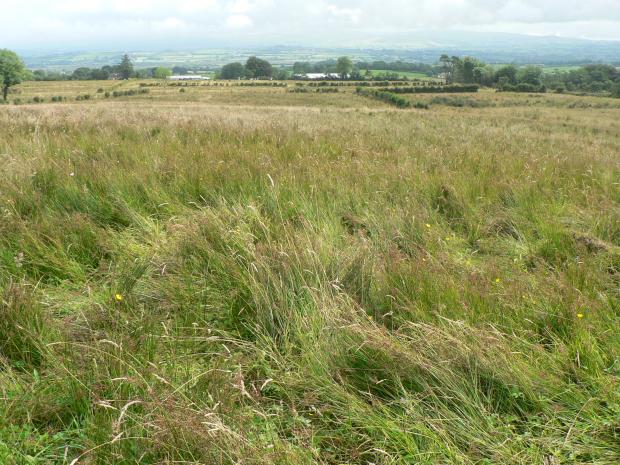
This area is of special scientific interest because of its species-rich wet grassland. Species-rich wet grassland tends to occur only where land management is not intensive, in particular where traditional farming practices have been maintained. As a result, it is not a widespread habitat in Northern Ireland and is often fragmented, consisting of individual fields, parts of fields or banks. Species-rich wet grasslands, like those found at Ballymacaldrack, are a scarce resource in Northern Ireland as most of the habitat has been agriculturally improved to some extent.
Purple moor-grass is a constant component of the sward along with red fescue, Yorkshire-fog and sweet vernal-grass. Sedges are abundant in the sward and include glaucous sedge, carnation sedge, yellow-sedge and tawny sedge. Herbs present are typical of traditionally managed rush pasture grasslands and include greater bird’s-foot-trefoil, Devil’s-bit scabious, bugle, common marsh-bedstraw, ragged-Robin, meadow buttercup, lesser spearwort and marsh willowherb.
Around the cliff where the soils are relatively thin and drier, species-rich lowland meadow occurs. Rushes are very scarce and the vegetation is dominated by grasses, with a high cover of herbs and occasional sedges. Plants distinctive of this type of vegetation include lady’s bedstraw, common bird’s-foot-trefoil, red fescue, mouse-ear-hawkweed, glaucous sedge, common knapweed and yellow oat-grass. Plants of note found in this area include greater butterfly-orchid, bulbous buttercup and zigzag clover.
Ballymacaldrack is an area of semi-natural grassland managed in a traditional way. As such, it provides valuable feeding and roosting sites for a range of animals, including birds and invertebrates.
Related articles
- ASSI Guidance for Public Bodies/Competent Authorities
- Coastal Areas of Special Scientific Interest
- Conservation Management Plans (CMPs)
- European Marine Sites - Marine Special Areas of Conservation and Special Protection Areas
- Introduction to Conservation Management Plans (CMPs) for Northern Ireland’s Special Areas of Conservation
- Marine Conservation Zones
- Marine Protected Areas
- Marine Ramsar sites
- Special Areas of Conservation
- Special Areas of Conservation for Harbour porpoise
- Special Protection Areas
